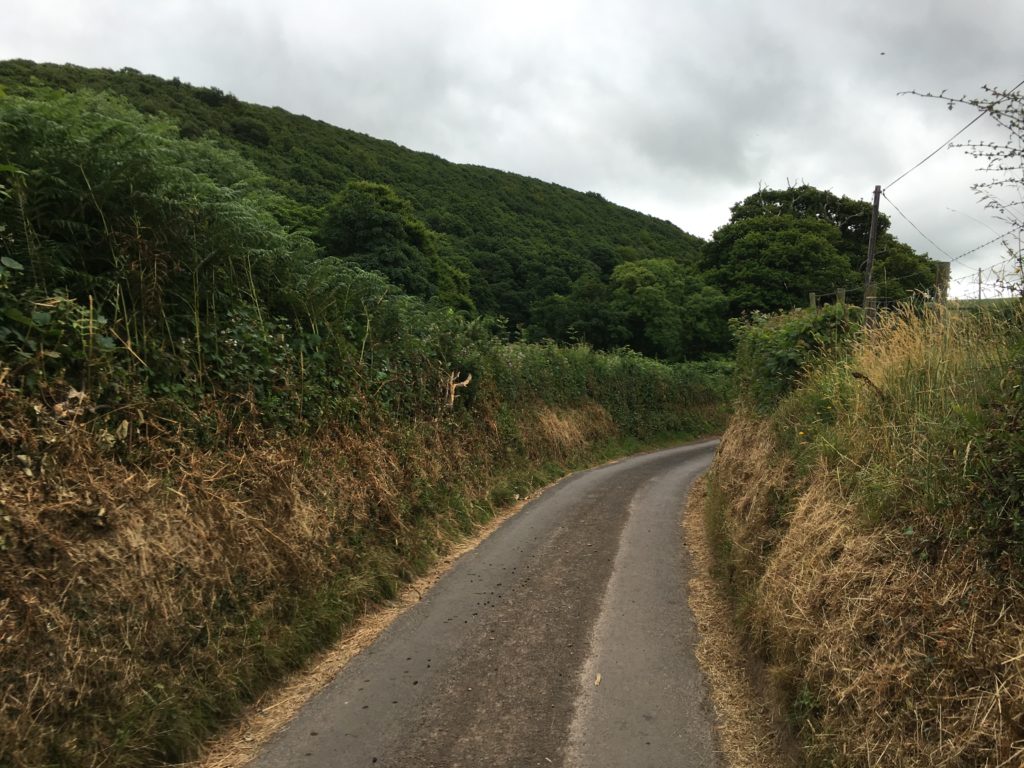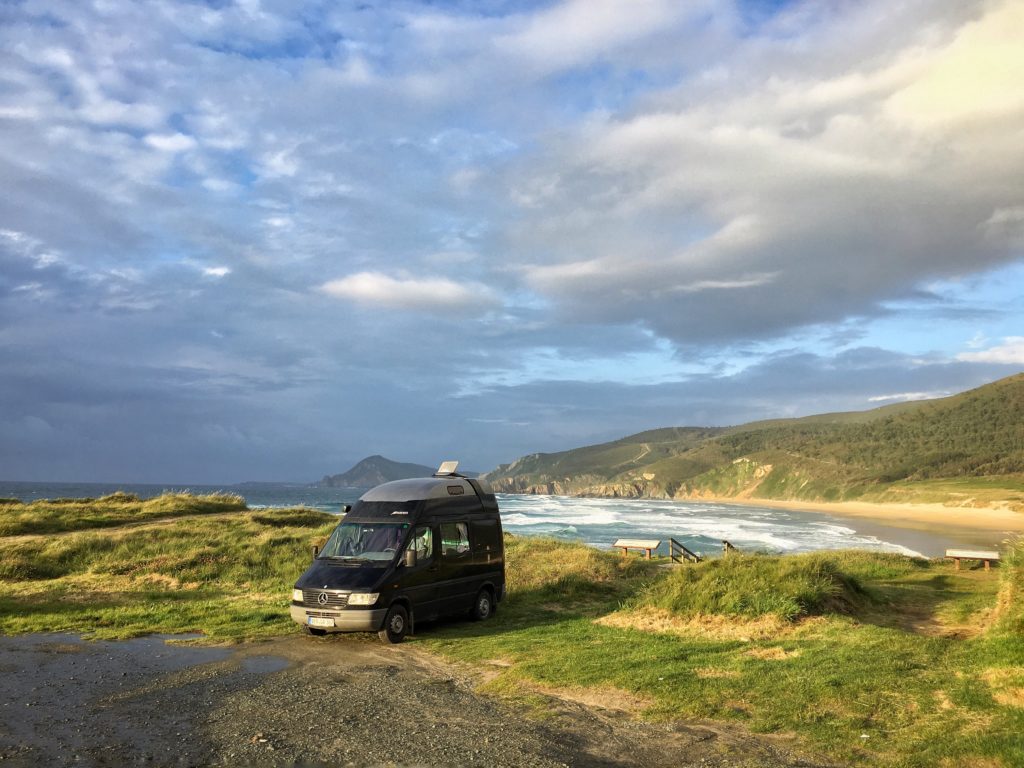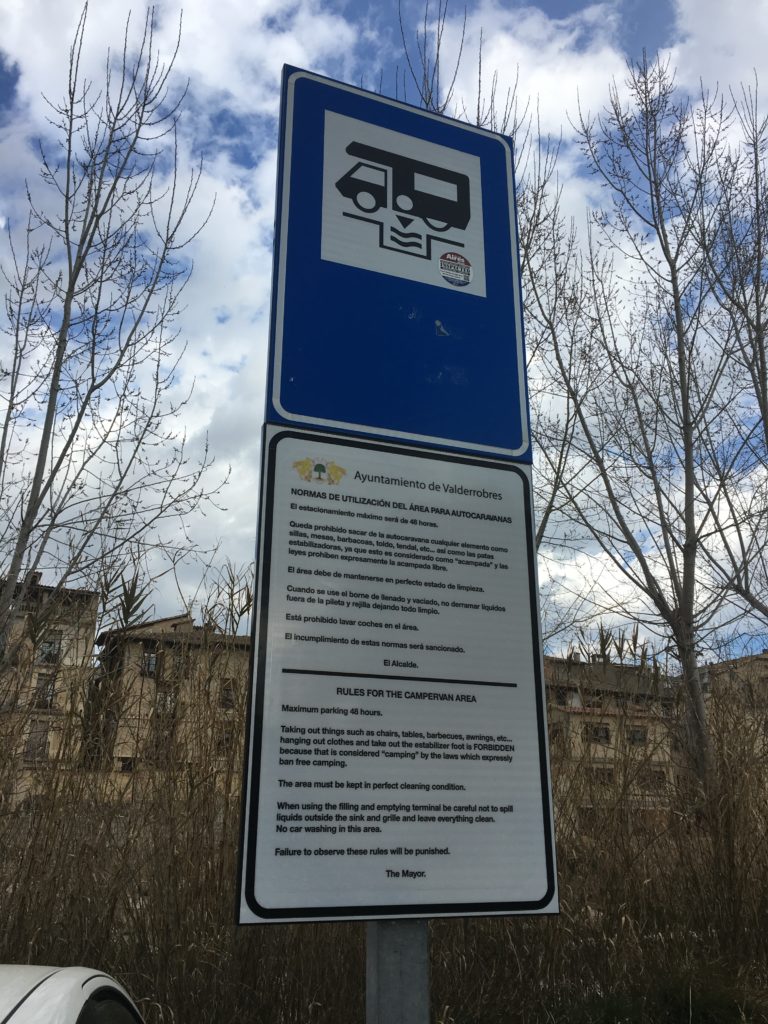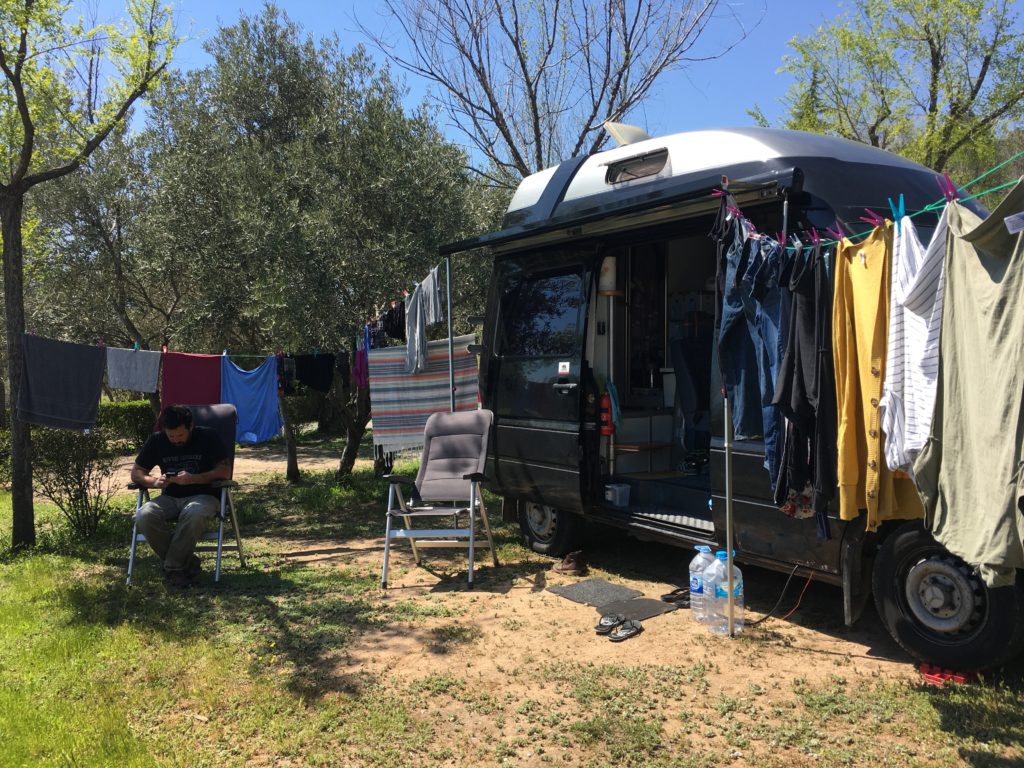So far, we have found travel in Europe to not only be relatively easy, but much more affordable than we thought. With it’s richness in culture and history, amazing food and wine, and established “overlanding” culture, Europe has proven to be a great place to travel by vehicle. While Europeans tend to do a lot of travel this way it is less common to find Americans or others outside the continent traveling and we found it relatively hard to find good information while researching from home. There are some notable exceptions of course, the Travelin-Tortugas traveled Europe for 5 years in their own vehicle and kept a very good blog with detailed information. They were not only a great source of information while researching and traveling but also great inspiration. At any rate here we detail our experiences with all of the burning questions we had before coming. We’ll try to keep updating this section with any new information as we come across it. We’ve broken the information down into the following categories.
Vehicle
The most important part of overland travel in Europe is having a vehicle. There seems to be a long standing debate amongst overlanders on whether to ship your own vehicle from home or buy a vehicle on the continent you are going to travel. We have now done both, and I think there are upsides and downsides to both. For now let’s just say it is possible to do either. You can ship your own vehicle to Europe and travel freely in all countries. The Travelin Tortugas were able to leave their US registered vehicle for 6 years on the continent with no problem. On the other hand it is possible to buy a vehicle in Europe and register it although it is not exactly easy to do. Because of the wide availability of small camper vans not easily found in the US and relatively low price in comparison, we opted to buy in Europe. You can read about the specifics of our experience here. A good place to look for used vehicles is the german website mobile.de. Every country seems to have different laws and regulations on non-residents buying a vehicle, but in our research the easiest seem to be Germany and England. Wherever you buy, you will at the minimum need a registered address to use, so if you have a contact in a particular country that might be a good place to start. From what we’ve been told, England is the easiest country for foreigners to buy and from our own searches of available campers for sale, it is possible to find left hand drive vehicles. For some reason, Germany seems to have the largest selection of affordable campers for sale. In order to register a vehicle in your name in Germany you need to have a registered address and a bank account in a German bank. Germany also has a law in which you can purchase a vehicle and register it for export, meaning you intend to export it to your country of origin. You can register it for export and receive temporary plates allowing you to drive the vehicle in the country for 3 months. I have read information saying you can extend the three months, but have not looked into for how long. We found a website germanexportplates.com that details one couples experience buying a vehicle this way, although keep in mind this was in 2011.
One thing to think about when choosing your vehicle for traveling in Europe is the wide availability of free “camping” or parking places. We have found that having our own bathroom and shower has given us the ability to avoid more expensive campgrounds and in fact this is what has made Europe affordable for us to travel. I’m not sure we would be able to travel this way in our Landcruiser.
Another important thing to consider is the size of your vehicle. So far we have found the streets, especially within the small towns to be much narrower than we are used to in the US. Parking is also much more difficult to find and fit in. Because of this we are extremely happy with our little short wheel based sprinter. We would not recommend buying or bringing a giant camper for travel in Europe. With our small van, we don’t have to worry about getting lost in city centers and finding ourselves stuck in a tiny street, parking whether in a parking lot or on the street is relatively easy to find as we are the same length as a normal car, and turning around when we are going the wrong way is always easy. This is not to say that one cannot travel Europe with a larger vehicle, it is simply our preference. We have seen campers in all shapes and sizes and everybody seems to adapt to what they have.

Insurance
Whatever your choice of vehicle you will have to have insurance for all of Europe. Most people get what is referred to as a Green Card, as the paper is green and it lists every country the insurance is good in. From our research we found that non-residents should be able to find a European insurer willing to insure you, even as a non-resident but that it can be quite expensive. Like the United States, insurance price is not only based on the value of the vehicle but also on the number of years of driving and number of instances on your record. If you are looking for European insurance, one piece of advise I read online was to get a letter from you insurer at home stating your good driving record which may help reduce your price.
Alternatively, if you are a US citizen you can look at USAA. They are a bank and insurance company for military personnel. Because of this they provide coverage in many parts of the world including Europe. It used to be you had to be a current or former military in order to use their services, but they have recently opened their membership to family members of military. If your father/mother, grandfather/grandmother, or some other extended family served, you are most likely eligible. We use USAA to insure both our Landcruiser in California and our Sprinter in Germany and have been happy with the prices and service.
Sleeping
One of the most important aspects of overland travel in Europe is where you stop to sleep for the night. Sleeping can be a large part of your budget if you are paying to park every night. We broke camping places into the three following categories. We find we use a combination of all three depending on where we are and what our needs are.
Wild Camping
Wild camping in Europe has not been as easy as we found it to be in South America. There is much less opportunity to get away from people and towns, which for us at least is important in feeling comfortable wild camping. Very little open land in Europe is not being used for some purpose or another; outside of towns most open land is usually private property and taken up by farms or ranches. That being said, we have wild camped when we’ve been in the mountains or near lakes, and it is usually easiest to find spots near the beach. We have generally checked in with people we pass or encounter to see what they think about us parking somewhere for the night, and mostly people seem to think it isn’t a problem. In the end wild camping is a very personal decision for travelers and one person’s comfort level may not be the others. Also, because of the wide availability of free “official” options we haven’t needed to look too hard for wild camping spots.

Official Camper Parking
Every country we have visited so far with the exception of England has had places designated for free or low cost “parking” or motor home stop over places for campers in almost every major city or tourist destination, and even in places not so touristy. Referred to by different names depending on the country, Stallplatz in Germany and Austria, Aires in France and parts of Spain, these parking lots are usually sponsored by the municipality and campers are allowed to stay up to 72 hours depending on the location. These areas are usually well signed by a campervan symbol, located near the town center, are no cost or very low cost in the more touristy areas (usually no more than 10 euros) and even often have a place to dump your cassette toilet and refill water for a few euros. These are not campgrounds, and generally you are not supposed to appear as though you are camping which means setting up tables and chairs and bringing out the potted plants is generally discouraged. Although I don’t think you’ll be kicked out for breaking out the chairs for a few hours in the afternoon then putting them away when you go in for the night. The one catch with all of these parkings is that you have to be self contained, i.e. usually there are no facilities. The other downside to these parkings is that they are not idealistic campgrounds. You are usually parked along side other campers in a gravel or paved parking lot in the middle of town; although we have happened upon a few very nice ones. But the upside is that they are free or very low cost. There are books that you can buy that detail the location of these parkings with information on what facilitates are available and reviews, but so far we have found they are country by country which can add up to a lot of cost and a lot of books if you plan to travel much of Europe.

Campgrounds
Every now and then we need to recharge our batteries, do a load of laundry, or just want to take a nice long hot shower, so we head for a campground. Campgrounds are relatively common and easy to find. So far we haven’t had a hard time finding one whenever needed. Most campgrounds in Europe are very well set up providing electricity at the site, decent wi-fi (sometimes for added cost), hot water showers, sinks with hot water for dishes and laundry, and washing machines (for a fee). Many have restaurants on site and in warmer regions most even have swimming pools. These wonderful campgrounds come with a price however, they usually range from 15-40 euros a night, although we have found a few charging upwards of 55 euros during the high season!
One thing to note if coming from the US is that campgrounds with US style dump stations will not be found. This mostly affects the way in which you deal with your black water. Most European campers use cassette toilets so dump stations are set up for those. If you have an Amercian RV with a black water tank I suggest taking a look at Travlin Tortugas’ website as they give good advice on dealing with this issue.

Finding Campgrounds and Camper Stopovers
As I mentioned above, there are a ton of books that detail the location and types of campgrounds throughout Europe. We have found these books tend to be country specific and take up too much cost and space to carry around. This obviously is a personal opinion.
There are a ton of apps out there for finding campgrounds and Aires at a range of costs. So far we have found ioverlander to be pretty lacking for Europe proper but decent for Turkey and Morroco and getting better. The main app we use now is called Parkings by campercontact. When we downloaded it, it was free but I believe they are now charging 5.99 for the full version (which you need as the light version is worthless). It is worth the cost in our opinion. It gives locations designated as camper parkings or campgrounds, you can narrow the search to include tent camping only which is good for those on motorcycles, you can search by a list or map which can be downloaded by country for offline use, it lists the amenities at each location, and most places have reviews which may or may not be in a language you understand. So far, in every country we have used it, just about every camping or parking we have found has been on the app. Another good app for finding places to sleep is called Park4Night. It separates camp sites by wild camping, aires, paid aires and campgrounds. It has actually had the best selection of sites with good reviews in most languages even in England where free camping is harder to find. It is easy to use, but the one downside is that it only works online so you need internet for your searches.
Toll Roads and Fuel Costs
When researching and planning our European adventures whenever travel by vehicle got brought up the response was almost always the same. Travel by vehicle in Europe is expensive. Tolls are expensive and fuel is expensive. While we have found it to me true that costs are higher than we pay in the US, it isn’t as bad as we thought.
While it is true that most highways in Europe are toll roads, most tolls can be avoided if you want. Some countries such as Austria, Slovenia, and Switzerland require you buy a vignette when you enter the country which allows you to drive on the highways. You can buy a vignette for 1 day, 1 week, etc and you purchase them at the gas station (with the exception of Swizterland which you have to buy at the border or they don’t let you in). While you could probably figure out a way to avoid all highways within these countries therefore not need to buy one, we paid around 15 Euro in each country. Not too bad. Germany is great for driving as there are no toll highways. The citizens of Germany pay very high road taxes in lue of tolls, so we can thank the Germans for their beautiful highways. Elsewhere in Europe, such as France, Spain, and Portugal toll highways can get pretty expensive. We actually paid around 90 Euro in one day while using toll roads in Portugal! Luckily, so far, we have found it easy to avoid tolls in these countries. In most instances there is another highway that runs near the toll highway that will take you where you want to go free of charge. These free highways are usually smaller, narrower, and not as in good condition and usually involve going through towns and roundabouts so take a lot longer than those nice smooth toll roads. Whether the savings in cost is worth the extra time is up to you. We have found in some instances taking the long way around has showed us some beautiful countryside we wouldn’t have seen from the nice toll highway. On the flip side, however, we have found in some instances we probably paid more for the extra fuel to take the long way around than we would have paid in tolls. Most GPS devices have an avoid tolls setting which you can use to compare the two options and make your decision.
Fuel is a bit more expensive throughout Europe than it is in the US, but not as bad as we thought. In fact we paid more for fuel in Chile than we have here. Prices vary country to country, but the most we have paid for fuel was 1.44 euros a liter or $5.95 USD per gallon which was in Switzerland.The least we have we paid is 0.98 euros per liter or $4.25 USD per gallon in Spain. Outside of Western Europe, fuel tends to be cheaper. In our 5 months of travel with Wanda in 2015 and our 3 months so far in 2016 fuel and tolls together have comprised about 10% of our budget.
When To Travel Europe
The Schengen Shuffle
If you are a non-EU member wanting to travel for extended time in Europe you will find your time limited by what is called the Schengen Agreement. The Schengen Agreement is the agreement amongst 26 European countries that allows border free travel throughout the member countries. You can find a map of countries that are part of the agreement here. Essentially it functions as one big country for the purposes of border and visa control. This has opened up Europe and made it very easy to travel country to country, but it has also placed restrictions on non-member citizens wishing to travel within Europe. Whereas prior to Schengen non-European citizens were able to spend 90 days within each country in Europe, and only had to move on to the next country to get another 90 days, we are now only allowed 90 days out of a 180 day period in ALL of the 26 member states. The member states include non-EU members such as the Norway, Iceland, and Switzerland as well. To make matters even more confusing some EU member countries such as The UK, Ireland, Bulgaria, Croatia, and Romania are not members of the Schengen Agreement, thus travel within these countries does not count towards your 90 days.
What this means for the traveler affected by the Schengen Agreement is if you want to spend more than 3 months at a time traveling Europe you are forced to do the Schengen Shuffle. As a side note, there is the possibility of applying for a long stay visa within any of the Schengen countries, which then allows you free movement around Europe for the given time on the visa. Long stay visas are given by individual countries and the requirements of which vary from country to country. Hopefully we will have more information on that in the near future. Anyway, back to the Schengen Shuffle. Because there are still some countries within western Europe that are not members of the Schengen Agreement, it is possible to travel Europe for a longer period of time than 3 months by planning your travels spending 90 days in member countries followed by 90 days in non-member countries. This essentially is why we call it the Schengen shuffle. Up to this point it all sounds fairly straight forward, you just have to plan your itinerary based on these countries, but here is what trips us up. Essentially the agreement states that people from countries such as the United States, Canada, Australia and some others do not need to apply for a visa before arriving. We are automatically given (at the discretion of the immigrations officer) a short stay visa of 90 days out of any 180 day period, starting at the time of entry. We have spent countless hours discussing amongst ourselves and other non-EU travelers how exactly that 180 day period is calculated. We essentially understood it to mean we can be in Schengen for 90 days at which point we have to leave for 90 days before we can come back again. According to the EU schengen information page, leaving the schengen zone for a minimum of 90 consecutive days allows a visitor another 90 day entry. The trouble comes when you are leaving and entering the shengen zone multiple times over the same 180 day period.
We eventually found an app called Schengen 90 which is very useful, as you enter the dates when you enter and exit the Schengen zone and using the law and online calculator offered by the EU it keeps track of how many days you have left at any given time. The app states it has been checked and proven correct in its calculations.